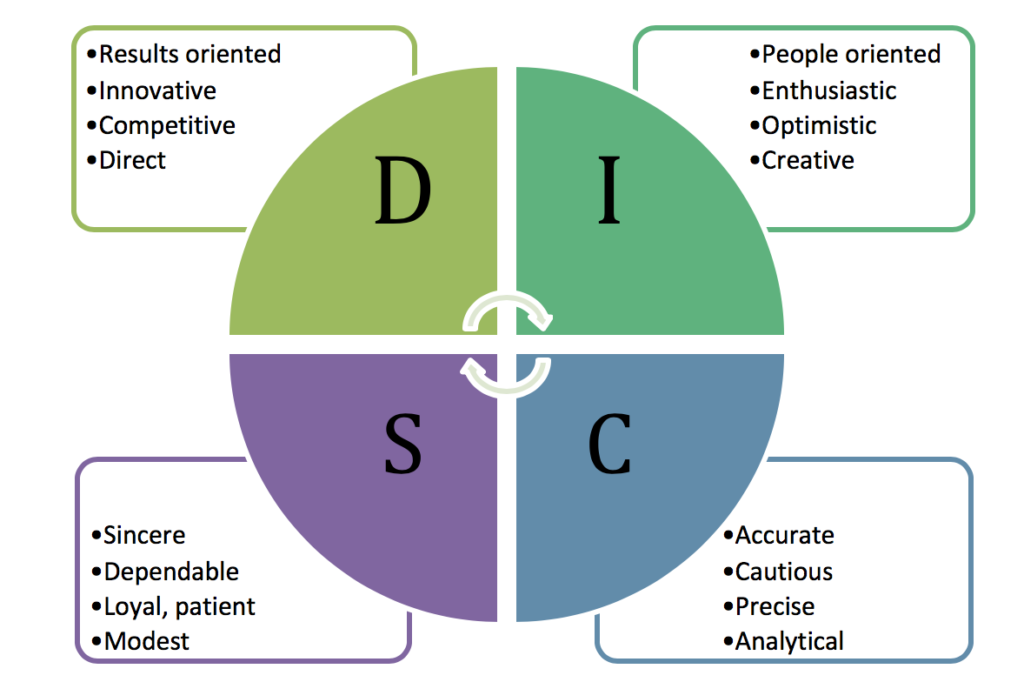4. TEAMWORK AND COMMUNICATION
4.3 DISC Model
DISC Model
DISC theory, developed in 1928 by Dr. William Moulton Marston (who also, as it happens, created the Wonder Woman comic series!), has evolved into a useful model for conflict management as it predicts behaviours based on four key personality traits he originally described as Dominance, Inducement, Submission, and Compliance.[1] The names of these four traits have been variously revised by others over the decades, so you might find different terms used in different contexts. The four general traits are now often described as (1) Dominance, (2) Influence/Inspiring (3) Steadiness/Supportive, and (4) Compliance/Conscientiousness (see Figure 4.3.1).

Industries often use DISC assessments in professional contexts. Having some insight into your teammates’ personality traits can help when trying to resolve conflicts. General characteristics of each trait are as follows:
- Dominance
- Characteristics: direct, decisive, ego-driven, problem-solver, and risk-taker; likes new challenges and freedom from routine; driven to overcome obstacles
- Strengths: great organizer and time manager; challenges the status quo; innovative
- Weaknesses: can be argumentative, disrespectful of authority, and overly ambitious (taking on too much); can be blunt, stubborn, and aggressive
- Inspiring/Influential
- Characteristics: enthusiastic, persuasive, optimistic, trusting, impulsive, charismatic, and emotional
- Strengths: creative problem solver; great cheer-leader, negotiator, and peace-maker; a real “people person”
- Weaknesses: more concerned with popularity than tangible results; lacks attention to detail
- Steady/Supportive
- Characteristics: reliable, predictable, friendly, good listener, team player, empathetic, easy-going, and altruistic.
- Strengths: dependable, loyal; respects authority; has patience and empathy; good at conflict resolution; willing to compromise.
- Weaknesses: resistant to change; sensitive to criticism; difficulty prioritizing
- Cautious/Conscientious/Compliant
- Characteristics: has high standards; values precision and accuracy; analytical and systematic; even-tempered, realistic, and logical; methodical; respect for authority
- Strengths: great information gatherer/researcher; able to define situations precisely and accurately; offers realistic perspective
- Weaknesses: can get bogged down in details; needs clear boundaries, procedures, and methods; difficulty accepting criticism; may avoid conflict or just “give in.” May be overly timid.
Review the following H5P flash card interaction to test your understanding of the traits in the DISC model.
Richard Beckhard’s GRPI model, adapted as the GRIP model will be discussed on the following page.
- W. M. Marsten, Emotions of Normal People. Keegan Paul Trench Trubner and Co. Ltd., 1928; republished London: Routledge, 2002 ↵

